World Heritage UNESCO
Sites of the World Cultural Heritage in Bulgaria
The monuments of UNESCO in Bulgaria are unique sites of the tangible and intangible culture and landscape.
TANGIBLE HERITAGE:
Boyana Church: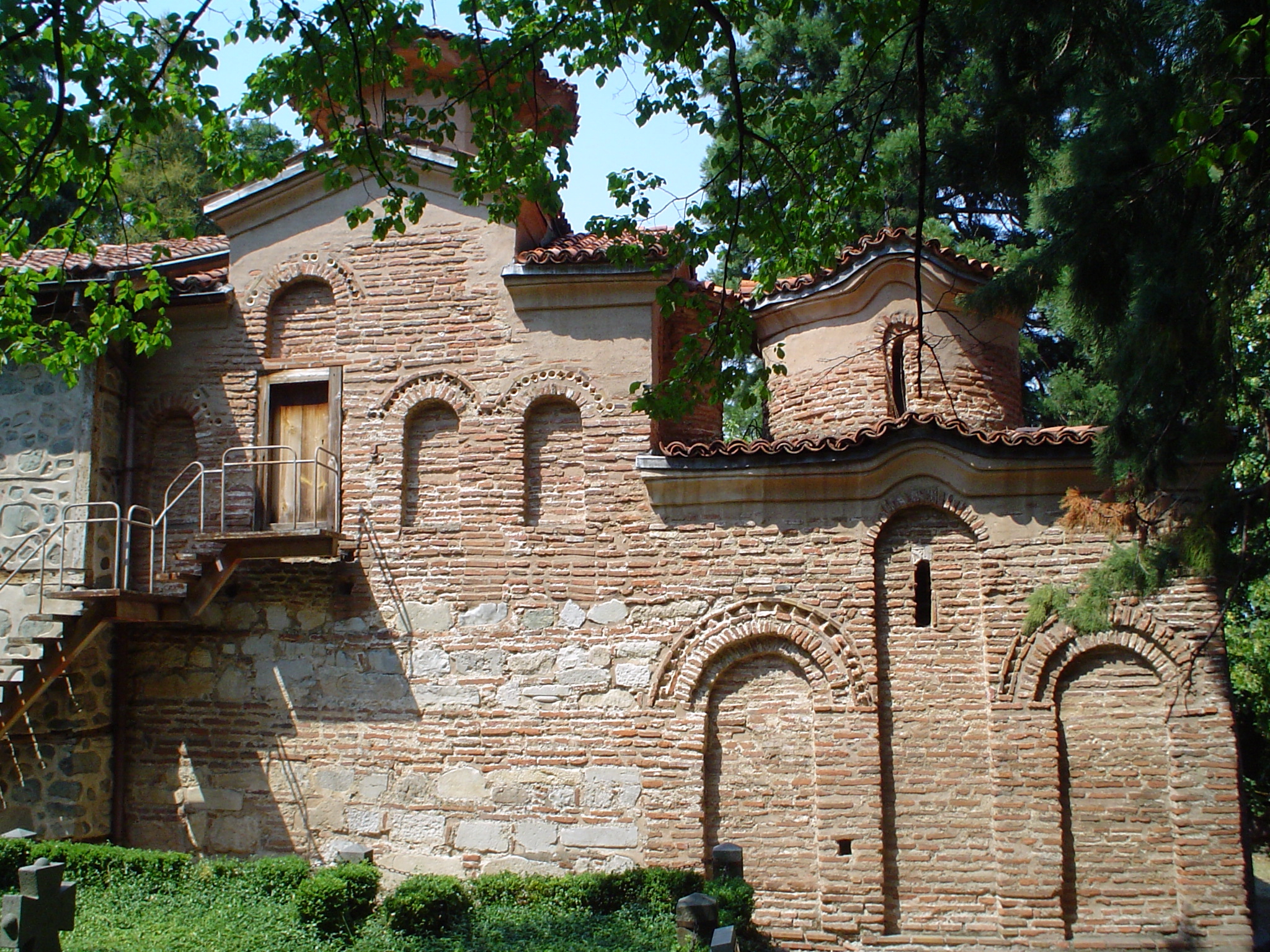 The Boyana Church is situated near Sofia and is one of the cultural symbols of Bulgaria for it represents the significant contribution of the Bulgarian Fine arts to the European cultural tradition. It has preserved valuable frescoes dating from 1259 with high artistic value and are considered to be the predecessors of the European Renaissance.
The Boyana Church is situated near Sofia and is one of the cultural symbols of Bulgaria for it represents the significant contribution of the Bulgarian Fine arts to the European cultural tradition. It has preserved valuable frescoes dating from 1259 with high artistic value and are considered to be the predecessors of the European Renaissance.
What makes the Boyana painting so unique is the realism, the convincing psychological depth and vitality of images along with the perfect technique. Among the most valuable images are those of the church donors - Sebastocrator Kaloyan and his wife Desislava, the royal couple Konstantin Tih Asen and Irina, the granddaughter of Tsar Ivan Asen II and the daughter of the Byzantine Emperor Theodore Laskaris. More...
Ivanovo Rock-Hewn Churches: 20 km to the south of Ruse, near Ivanovo village is located the unique Rock-hewn Monastery St. Archangel Michael. The monastery is a net of numerous small rock-hewn churches, cells and chapels, hewn 32 m above Rusenski Lom River. More...
The Thracian Tomb of Kazanlak: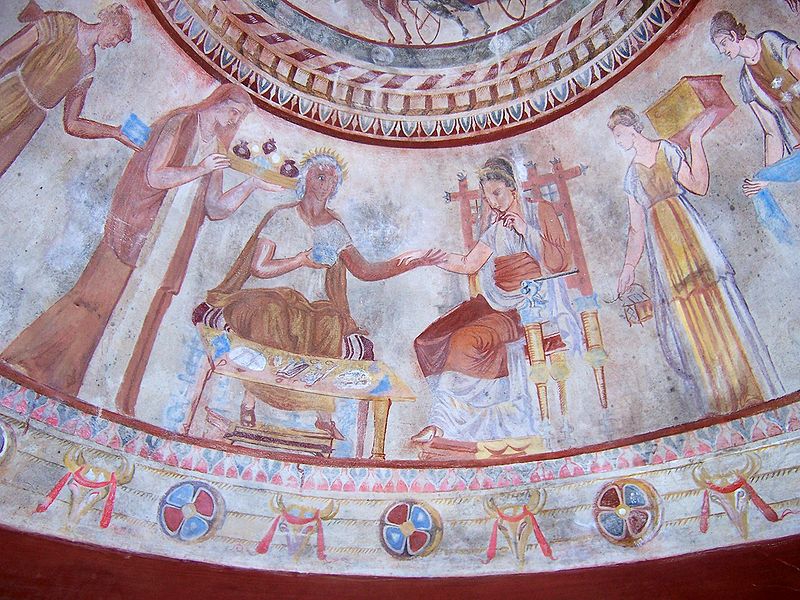 The Tomb of Kazanlak is an exceptional proof about the building mastery of Thracians and about the bloom of the fine arts during the Hellenist epoch. The Tomb was built at the end of IV century B.C. and the belief is that it was made for a Thracian nobleman. Its uniqueness is due mainly to the frescoes dating from the end of IV century and the beginning of III century B.C. It consists of three premises - a rectangular antechamber, a narrow passage (dromus), which leads to a round burial chamber. The chamber is covered by conical cupola and is decorated with ornamental and figured painting. More...
The Tomb of Kazanlak is an exceptional proof about the building mastery of Thracians and about the bloom of the fine arts during the Hellenist epoch. The Tomb was built at the end of IV century B.C. and the belief is that it was made for a Thracian nobleman. Its uniqueness is due mainly to the frescoes dating from the end of IV century and the beginning of III century B.C. It consists of three premises - a rectangular antechamber, a narrow passage (dromus), which leads to a round burial chamber. The chamber is covered by conical cupola and is decorated with ornamental and figured painting. More...
The Madara Rider is an archeological monument, representing a law relief hewn in rock at a height of 23 m from the ground level on a sheer rock. It is located in Northeast Bulgaria, near Madara village, 20 km away from Shumen. The relief represents a triumphing ruler – a symbol of the power of the First Bulgarian Empire. More...
The Old town of Nesebar: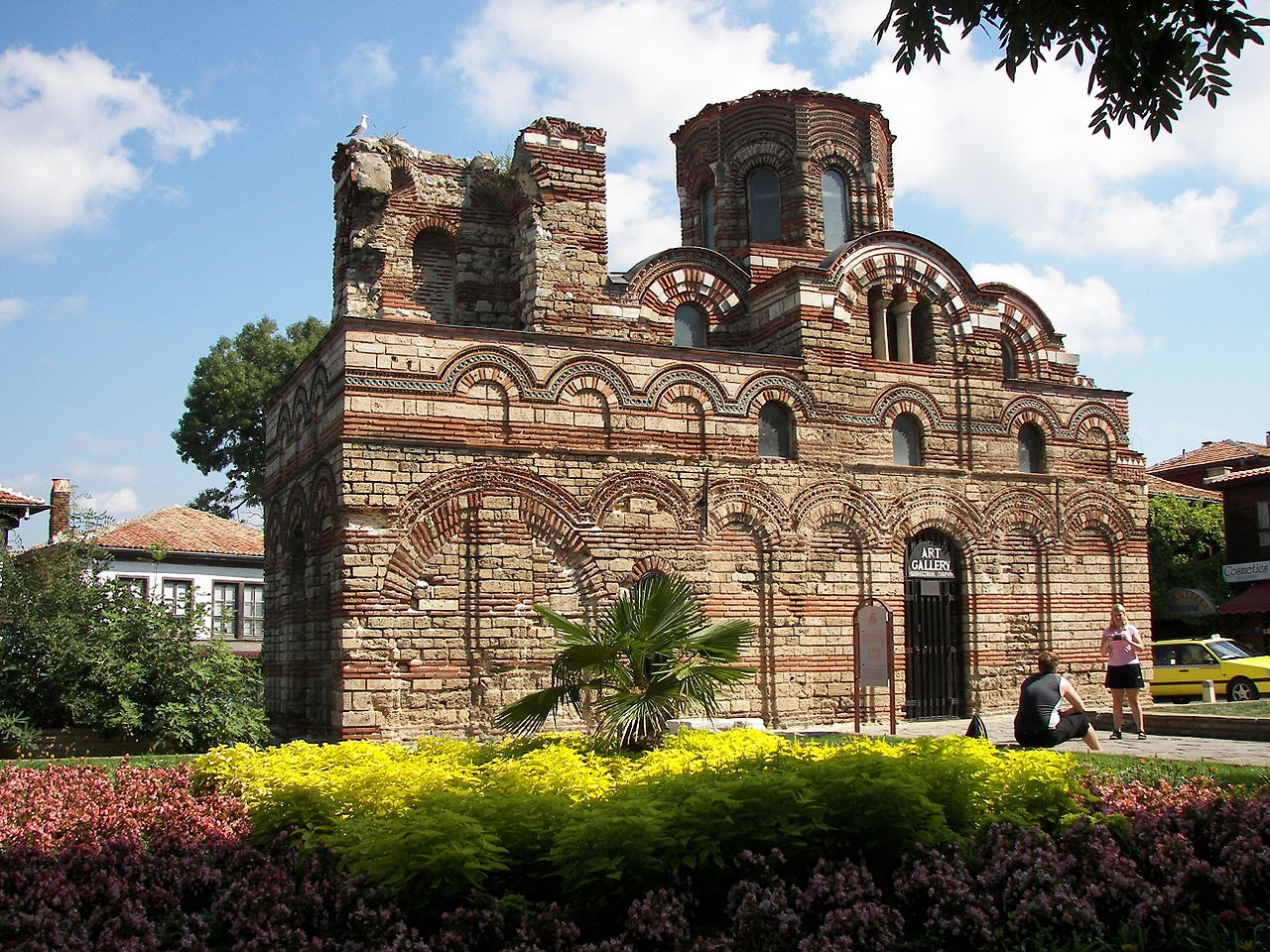 Nesebar is one of the oldest towns in Europe. The Old city is an unique architectural reserve combining the ancient monuments of IV-V century with the picturesque churches of Nessebar and the cozy houses from the time of the Bulgarian National Revival. The Old town of Nessebar is situated on a small peninsula linked to the Bulgarian South Black Sea coast.
Nesebar is one of the oldest towns in Europe. The Old city is an unique architectural reserve combining the ancient monuments of IV-V century with the picturesque churches of Nessebar and the cozy houses from the time of the Bulgarian National Revival. The Old town of Nessebar is situated on a small peninsula linked to the Bulgarian South Black Sea coast.
It was established as a fortified Thracian centre named Messambria approximately 510 B.C. and further it became a Greek settlement organized as a polis. More...
Rila Monastery: The Monastery is located in the Southwest Bulgaria, 117 km away from Sofia city in a difficult to reach part of the Rila Mountain, among picturesque landscape. Rila Monastery is the second largest monastery on the Balkans. The best Bulgarian masters at that time were involved in its building. It was established in the 30s of X century by hermit Monk John of Rila and his followers. More...
The Thracian Tomb of Sveshtari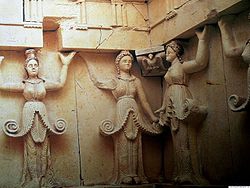 is located near the city of Isperih, 84 km from Silistra and 152 km from Varna. This is Thracian-Hellenistic Tomb that dates back from the first half of III century B.C. This is a royal tomb, in which is probably buried the Getae ruler Drumiched. The tomb consists of a passage and three square chambers: an anteroom, a side room and a burial chamber, covered by a semi-cylindrical vault. Gifts and offerings probably were placed to the side of the entrance of the room. All these things are made of precious metals were plundered yet in the antiquity. The rich people buried in the tomb are evidenced by the bones of five horses, killed and buried with their master to accompany him to the great beyond. More...
is located near the city of Isperih, 84 km from Silistra and 152 km from Varna. This is Thracian-Hellenistic Tomb that dates back from the first half of III century B.C. This is a royal tomb, in which is probably buried the Getae ruler Drumiched. The tomb consists of a passage and three square chambers: an anteroom, a side room and a burial chamber, covered by a semi-cylindrical vault. Gifts and offerings probably were placed to the side of the entrance of the room. All these things are made of precious metals were plundered yet in the antiquity. The rich people buried in the tomb are evidenced by the bones of five horses, killed and buried with their master to accompany him to the great beyond. More...
INTANGIBLE HERITAGE:
The Bistrishki Babi or Grannies of Bistritsa is an authentic folklore group from Bistritsa village located near Sofia. The group was established in 1939 and presents authentic songs from Shopluk Region. The original polyphonic singing has brought worldwide fame to the group Bistrishkite babi. More...
Nestinarstvo – Fire dancing: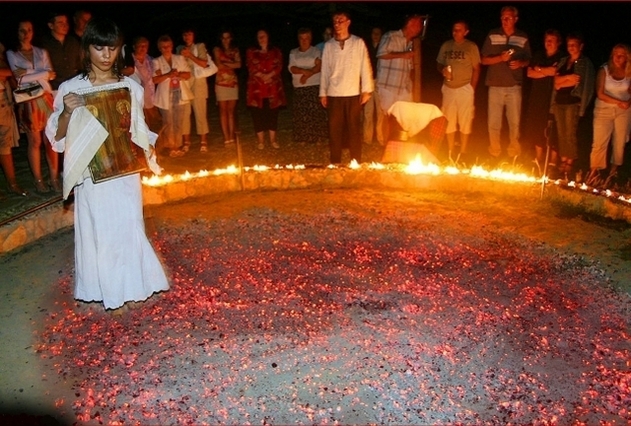 Nestinarstvo is a typical Bulgarian custom that has its roots in the remote times of heathenism. The most attractive and specific thing about it is the dancing on smouldering embers. That custom is still performed in the legendary Balgari village, which is located in the picturesque Strandzha Mountain. The ritual is performed mainly on the St. Constantine and St. Helen’s Day – on the 3rd and 4th of June. All villagers take part in it, but fire dancing is only for those nestinari who are professionals. More...
Nestinarstvo is a typical Bulgarian custom that has its roots in the remote times of heathenism. The most attractive and specific thing about it is the dancing on smouldering embers. That custom is still performed in the legendary Balgari village, which is located in the picturesque Strandzha Mountain. The ritual is performed mainly on the St. Constantine and St. Helen’s Day – on the 3rd and 4th of June. All villagers take part in it, but fire dancing is only for those nestinari who are professionals. More...
NATURAL HERITAGE:
Pirin National Park: Pirin Mountain is a part of the Rilo-Rhodope massif. The Pirin National Park is the largest national park in Bulgaria and spans on an area of 26 480 ha. More...
Srebarna Biosphere Reserve: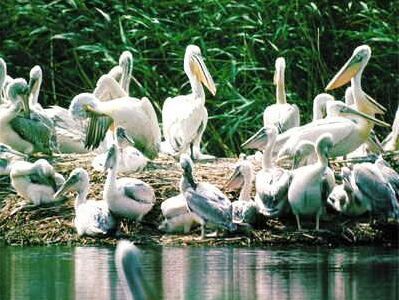 The Reserve is located 2 km to the south of Danube River, 17 km from Silistra and spans on an area of 600 ha. It includes the Srebarna Lake and the territories surrounding it. This is one of the most interesting wet zones in Europe with an exceptional diversity of plant and animal species. More specific representatives of aquatic flora are to be found there such as water lily, summer snowflake, water forget-me-not, reedmace and reed. Many animal species in the reserve are examples of rare representatives of the national and world genetic fund such as: Dalmatian pelican, wild geeses... More...
The Reserve is located 2 km to the south of Danube River, 17 km from Silistra and spans on an area of 600 ha. It includes the Srebarna Lake and the territories surrounding it. This is one of the most interesting wet zones in Europe with an exceptional diversity of plant and animal species. More specific representatives of aquatic flora are to be found there such as water lily, summer snowflake, water forget-me-not, reedmace and reed. Many animal species in the reserve are examples of rare representatives of the national and world genetic fund such as: Dalmatian pelican, wild geeses... More...
The monuments of UNESCO in Bulgaria are unique sites of the tangible and intangible culture and landscape.
TANGIBLE HERITAGE:
Boyana Church:
 The Boyana Church is situated near Sofia and is one of the cultural symbols of Bulgaria for it represents the significant contribution of the Bulgarian Fine arts to the European cultural tradition. It has preserved valuable frescoes dating from 1259 with high artistic value and are considered to be the predecessors of the European Renaissance.
The Boyana Church is situated near Sofia and is one of the cultural symbols of Bulgaria for it represents the significant contribution of the Bulgarian Fine arts to the European cultural tradition. It has preserved valuable frescoes dating from 1259 with high artistic value and are considered to be the predecessors of the European Renaissance.
What makes the Boyana painting so unique is the realism, the convincing psychological depth and vitality of images along with the perfect technique. Among the most valuable images are those of the church donors - Sebastocrator Kaloyan and his wife Desislava, the royal couple Konstantin Tih Asen and Irina, the granddaughter of Tsar Ivan Asen II and the daughter of the Byzantine Emperor Theodore Laskaris. More...
Ivanovo Rock-Hewn Churches: 20 km to the south of Ruse, near Ivanovo village is located the unique Rock-hewn Monastery St. Archangel Michael. The monastery is a net of numerous small rock-hewn churches, cells and chapels, hewn 32 m above Rusenski Lom River. More...
The Thracian Tomb of Kazanlak:
 The Tomb of Kazanlak is an exceptional proof about the building mastery of Thracians and about the bloom of the fine arts during the Hellenist epoch. The Tomb was built at the end of IV century B.C. and the belief is that it was made for a Thracian nobleman. Its uniqueness is due mainly to the frescoes dating from the end of IV century and the beginning of III century B.C. It consists of three premises - a rectangular antechamber, a narrow passage (dromus), which leads to a round burial chamber. The chamber is covered by conical cupola and is decorated with ornamental and figured painting. More...
The Tomb of Kazanlak is an exceptional proof about the building mastery of Thracians and about the bloom of the fine arts during the Hellenist epoch. The Tomb was built at the end of IV century B.C. and the belief is that it was made for a Thracian nobleman. Its uniqueness is due mainly to the frescoes dating from the end of IV century and the beginning of III century B.C. It consists of three premises - a rectangular antechamber, a narrow passage (dromus), which leads to a round burial chamber. The chamber is covered by conical cupola and is decorated with ornamental and figured painting. More...
The Madara Rider is an archeological monument, representing a law relief hewn in rock at a height of 23 m from the ground level on a sheer rock. It is located in Northeast Bulgaria, near Madara village, 20 km away from Shumen. The relief represents a triumphing ruler – a symbol of the power of the First Bulgarian Empire. More...
The Old town of Nesebar:
 Nesebar is one of the oldest towns in Europe. The Old city is an unique architectural reserve combining the ancient monuments of IV-V century with the picturesque churches of Nessebar and the cozy houses from the time of the Bulgarian National Revival. The Old town of Nessebar is situated on a small peninsula linked to the Bulgarian South Black Sea coast.
Nesebar is one of the oldest towns in Europe. The Old city is an unique architectural reserve combining the ancient monuments of IV-V century with the picturesque churches of Nessebar and the cozy houses from the time of the Bulgarian National Revival. The Old town of Nessebar is situated on a small peninsula linked to the Bulgarian South Black Sea coast.
It was established as a fortified Thracian centre named Messambria approximately 510 B.C. and further it became a Greek settlement organized as a polis. More...
Rila Monastery: The Monastery is located in the Southwest Bulgaria, 117 km away from Sofia city in a difficult to reach part of the Rila Mountain, among picturesque landscape. Rila Monastery is the second largest monastery on the Balkans. The best Bulgarian masters at that time were involved in its building. It was established in the 30s of X century by hermit Monk John of Rila and his followers. More...
The Thracian Tomb of Sveshtari
 is located near the city of Isperih, 84 km from Silistra and 152 km from Varna. This is Thracian-Hellenistic Tomb that dates back from the first half of III century B.C. This is a royal tomb, in which is probably buried the Getae ruler Drumiched. The tomb consists of a passage and three square chambers: an anteroom, a side room and a burial chamber, covered by a semi-cylindrical vault. Gifts and offerings probably were placed to the side of the entrance of the room. All these things are made of precious metals were plundered yet in the antiquity. The rich people buried in the tomb are evidenced by the bones of five horses, killed and buried with their master to accompany him to the great beyond. More...
is located near the city of Isperih, 84 km from Silistra and 152 km from Varna. This is Thracian-Hellenistic Tomb that dates back from the first half of III century B.C. This is a royal tomb, in which is probably buried the Getae ruler Drumiched. The tomb consists of a passage and three square chambers: an anteroom, a side room and a burial chamber, covered by a semi-cylindrical vault. Gifts and offerings probably were placed to the side of the entrance of the room. All these things are made of precious metals were plundered yet in the antiquity. The rich people buried in the tomb are evidenced by the bones of five horses, killed and buried with their master to accompany him to the great beyond. More...
INTANGIBLE HERITAGE:
The Bistrishki Babi or Grannies of Bistritsa is an authentic folklore group from Bistritsa village located near Sofia. The group was established in 1939 and presents authentic songs from Shopluk Region. The original polyphonic singing has brought worldwide fame to the group Bistrishkite babi. More...
Nestinarstvo – Fire dancing:
 Nestinarstvo is a typical Bulgarian custom that has its roots in the remote times of heathenism. The most attractive and specific thing about it is the dancing on smouldering embers. That custom is still performed in the legendary Balgari village, which is located in the picturesque Strandzha Mountain. The ritual is performed mainly on the St. Constantine and St. Helen’s Day – on the 3rd and 4th of June. All villagers take part in it, but fire dancing is only for those nestinari who are professionals. More...
Nestinarstvo is a typical Bulgarian custom that has its roots in the remote times of heathenism. The most attractive and specific thing about it is the dancing on smouldering embers. That custom is still performed in the legendary Balgari village, which is located in the picturesque Strandzha Mountain. The ritual is performed mainly on the St. Constantine and St. Helen’s Day – on the 3rd and 4th of June. All villagers take part in it, but fire dancing is only for those nestinari who are professionals. More...
NATURAL HERITAGE:
Pirin National Park: Pirin Mountain is a part of the Rilo-Rhodope massif. The Pirin National Park is the largest national park in Bulgaria and spans on an area of 26 480 ha. More...
Srebarna Biosphere Reserve:
 The Reserve is located 2 km to the south of Danube River, 17 km from Silistra and spans on an area of 600 ha. It includes the Srebarna Lake and the territories surrounding it. This is one of the most interesting wet zones in Europe with an exceptional diversity of plant and animal species. More specific representatives of aquatic flora are to be found there such as water lily, summer snowflake, water forget-me-not, reedmace and reed. Many animal species in the reserve are examples of rare representatives of the national and world genetic fund such as: Dalmatian pelican, wild geeses... More...
The Reserve is located 2 km to the south of Danube River, 17 km from Silistra and spans on an area of 600 ha. It includes the Srebarna Lake and the territories surrounding it. This is one of the most interesting wet zones in Europe with an exceptional diversity of plant and animal species. More specific representatives of aquatic flora are to be found there such as water lily, summer snowflake, water forget-me-not, reedmace and reed. Many animal species in the reserve are examples of rare representatives of the national and world genetic fund such as: Dalmatian pelican, wild geeses... More...
























